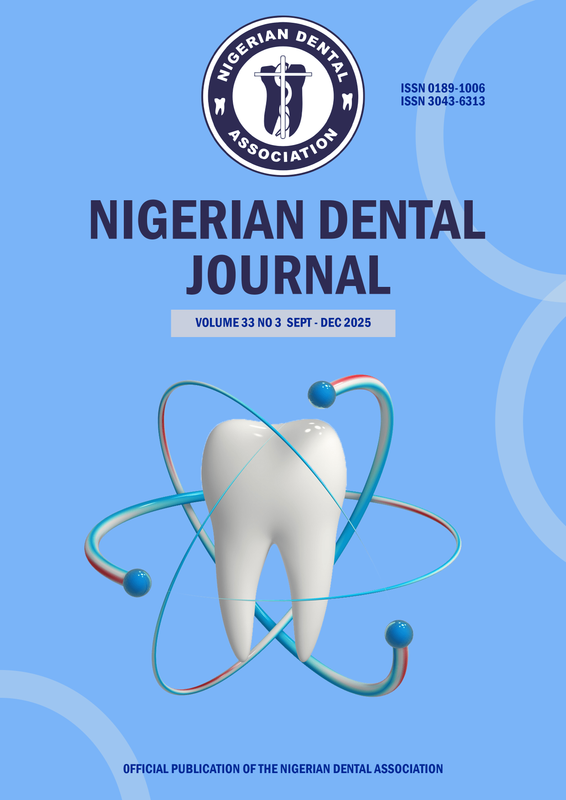Contributions of fluoride to the sensitivity of oral isolates to some anti-microbial agents
DOI:
https://doi.org/10.61172/ndj.v15i1.199Keywords:
Fluoride, Oral isolates, Antimicrobial, Minimum Inhibitory ConcentrationAbstract
Objective: Plaque formation on teeth surfaces, gingivitis and caries has been associated with the presence and activities of oral flora; and several agents have been demonstrated to exhibit anti-plaque potentials. This Study is designed to evaluate the inhibitory potentials of some agents on fluoride-exposed and non-exposed oral isolates capable of causing dental plaque and infections.
Method: Agar dilution method was used to determine the Minimum Inhibitory Concentration (MIC) of triclosan, ampicillin and chlorhexidine against fluoride-exposed and non-exposed Staphylococcus aureus, Staphylococcus epidermidis, Streptococcus pyogenes, Bacillus subtilis, and Candida albicans.
Results: All the agents showed remarkable antimicrobial activities against fluoride-exposed oral isolates. Our study also showed a 75% decrease (p<0.05) in the MICs of all the agents used against the test organisms after 4 weeks of exposure to 0.11w/w% fluoride. In contrast, the MIC of the non-exposed isolates were significantly higher(p<0.05) and did not change throughout this period. Triclosan and chlorhexidine showed, in addition to their antibacterial activities, outstanding antifungal action resulting in more than 93% increase in the susceptibility of Candida albicans. These observations may be attributable to the synergistic effect of fluoride on the antimicrobial activity of these agents.
Conclusion: It can be inferred from this study that regular daily use of fluoride containing dentifrice having antimicrobial agent such as triclosan or in conjunction with mouthwash containing chlorhexidine will aid in the prevention of plaque formation.
Downloads
Downloads
Published
Issue
Section
License
Copyright (c) 2007 U. E. Mendie

This work is licensed under a Creative Commons Attribution 4.0 International License.
Open Access Statement
- We became fully Open Access since January 2023.
- Our new and archived materials are available free of charge on open basis and under a Creative Commons license as stated below.
Copyright statement
Copyright © 1999 The authors. This work, Nigerian Dental Journal by Nigerian Dental Association is licensed under Creative Commons Attribution 4.0 International License.

